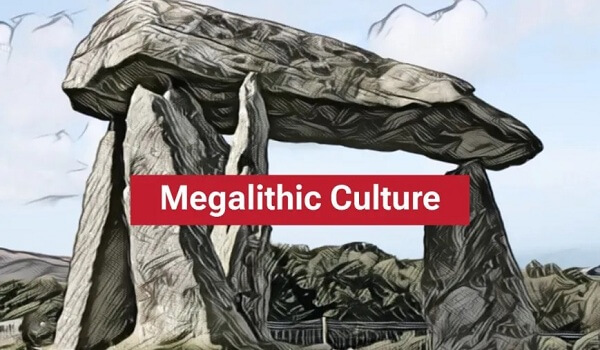A large number of megalithic hat stones were found during a recent archaeological salvage excavation conducted by the Kerala Archaeology Department at Nagaparamba in Kuttippuram village, near Tirunavaya.Hat stones, popularly called Thoppikkallu in Malayalam, are hemispherical laterite stones used as lid on burial urns during the megalithic period.
Salvage excavation
- Salvage excavation also known as rescue archaeology or emergency archaeology, refers to a type of archaeological excavation that is conducted in response to a situation where archaeological remains are threatened by construction, development, or other activities
Megaliths
- Megaliths were constructed either as burial sites or commemorative (non-sepulchral) memorials.
| Commemorative non-sepulchral memorials Commemorative non-sepulchral memorials are monuments, structures, or installations that are created to honor and remember individuals, events, or significant aspects of history without being associated with burial or interment. These memorials serve as a tangible and lasting tribute to commemorate the past and convey its significance to present and future generationsOrigin: As megalithic societies were preliterate, the racial or ethnic origins of the megalithic people are thus difficult to pin down.Significance: Megaliths were not built for commoners. They signify the emergence of a ruling class or elite who presided over a surplus economy.Time – Period: In India, archaeologists trace the majority of the megaliths to the Iron Age (1500 BC to 500 BC), though some sites precede the Iron Age, extending up to 2000 BC.21.1 1Geographical Spread: Megaliths are spread across the Indian subcontinent, though the bulk of them are found in peninsular India, concentrated in the states of Maharashtra (mainly in Vidarbha), Karnataka, Tamil Nadu, Kerala, Andhra Pradesh and Telangana.Even today, a living megalithic culture endures among some tribes such as the Gonds of central India and the Khasis of Meghalaya.Different Types of Megalithic Structure include: Stone Circles, Dolmen, Cist, Monolith and Capstone style. |
Key Highlights of Findings
- Cultural Significance: All footprints point westward, potentially signifying their symbolic importance.
- Archaeologists interpret them as representing the souls of deceased individuals, while local residents attribute them to a goddess.
- Age: It is estimated to be over 2,000 years old, adding depth to the historical narrative of Kerala.
- Other Discoveries: It resembles prehistoric rock art found at Avalakki Pera in Udupi district, Karnataka.
Prehistoric discoveries in Kerala include:
- Temple decorations at Erikulam valiyapara in Kasaragod.
- Running tiger carvings in Neeleswaram.
- Human figures at Cheemeni Ariyittapara.
- Bull figures at Ettukudukka in Kannur.
- Edakkal Caves carvings in Wayanad.
Megalithic Culture
- About: Megalithic Culture refers to a prehistoric cultural tradition characterized by the construction of large stone structures or monuments, known as megaliths.
- Chronology of Megaliths: The Brahmagiri excavation dates South India’s megalithic cultures to between the 3rd century BC and 1st century AD.
- Geographical Distribution: The main concentration of megalithic culture is in Deccan, especially south of the Godavari River.
- It has been found across the Punjab Plains, Indo-Gangetic basin, Rajasthan, Gujarat, and Burzahom in Jammu and Kashmir, with key sites including Seraikala (Bihar), Khera (Uttar Pradesh), and Deosa (Rajasthan).
- Use of Iron: The Megalithic period in South India marked a full-fledged Iron Age culture, where iron technology was fully utilized.It is evidenced by iron weapons and agricultural implements discovered from Junapani in Vidarbha to Adichanallur in Tamil Nadu.
- Rock Paintings: Rock paintings found at megalithic sites depict scenes of hunting, cattle raids, and group dancing.

